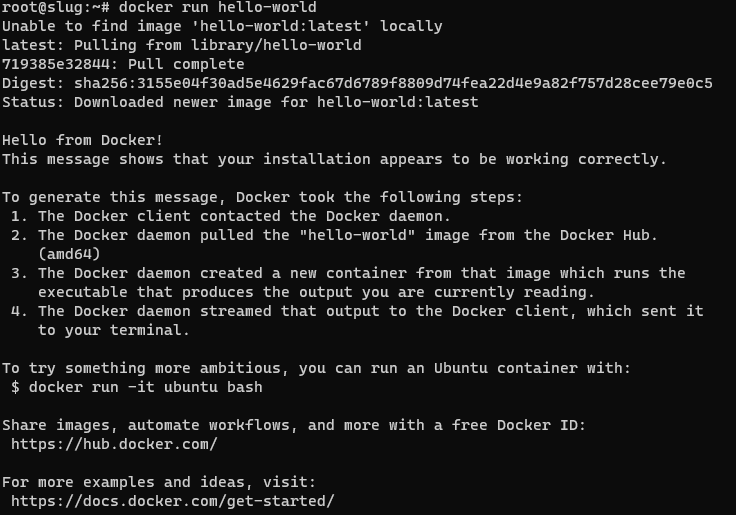Almost a chuckle
Great Blue Heron
- 1 Post
- 20 Comments

 4·3 months ago
4·3 months agoThat is such a fucked up view of the world that I have a hard time accepting that it’s real (even though I know it’s quite common).

 11·10 months ago
11·10 months agoI assume enforcing the no photography rule?

 13·10 months ago
13·10 months agoProtecting children would mean knowing which users are children, which would mean knowing the actual legal identity of every user of the platform. It’s never going to happen.

 1·10 months ago
1·10 months agoI assume “data” includes your container configuration files in this strategy?

 6·10 months ago
6·10 months agoIt should be obvious from the context here, but you don’t just need geographic separation, you need “everything” separation. If you have all your data in the cloud, and you want disaster recovery capability, then you need at least two independent cloud providers.

 1·11 months ago
1·11 months agoI used Kodi and now use Jellyfin as client/server - my media is on a local server. The difference (the way I use it) is that with Kodi the server was just a file server and the client (Kodi) was doing all the work. The Jellyfin server is a media server and the clients are very lightweight. I was pushed to move to Jellyfin when I got a new Sony TV - the built-in Android TV experience was very usable but I couldn’t install Kodi - it ran out of space trying to build the media database. I’m sure there are ways I could have made it work, but I’d heard about Jellyfin and figured I’d try it. I liked it and never went back.
All that makes sense - except that I’m taking about 1or 2 physical servers at home and my only real motivation for looking into containers at all is that some software I’ve wanted to install recently has shipped as docker compose scripts. If I’m going to ignore their packaging anyway, and massage them into some other container management system, I would be happier just running them of bare metal like I’ve done with everything else forever.

 151·11 months ago
151·11 months agoI think Kodi was amazing when it was XBMC and the only real option. It seems to be falling behind now though :-( I moved to Jellyfin a couple of years ago.
Currently no virtualisation at all - just my OS on bare metal with some apps installed. Remember, this is a single machine sitting in my basement running Samba and a couple of other things - there’s not much to orchestrate :-)
Wow - I thought docker was overkill for a home server and you’ve gone kubernetes! I guess if you use it for work and that’s what you’re comfortable with?
Because it seems overkill for a home server. Up until recently all I ran was Samba and a torrent daemon. Why would I install another layer of overhead to manage two applications on one server?
Yeah, I get it now. Just the way I read it the first time it sounded like you were saying that was a complete command and it was going to do something “magic” for me :-)
That’s exactly how I feel about it. Except (as noted in my post…) the software availability issue. More and more stuff I want is “docker first” and I really have to go out of my way to install and maintain non docker versions. Case in point - I’m trying to evaluate Immich so I can move off Google photos. It looks really nice, but it seems to be effectively “docker only.”
# docker compose up -d no configuration file provided: not found
Why not? Because I’ve never heard of it until this thread - lots of people mentioning it so obviously I’ll look into it.

 261·11 months ago
261·11 months ago
Well, that wasn’t a huge investment :-) I’m in…
I understand I’ve got LOTS to learn. I think I’ll start by installing something new that I’m looking at with docker and get comfortable with something my users (family…) are not yet relying on.

 29·11 months ago
29·11 months agoA store near me (Canadian Tire) has them linked to their app - you find what you want in the app, go to the aisle listed and tap “find this item” and the LED flashes.

 161·1 year ago
161·1 year agoThat’s kinda where I’m at, but I already have kids, and now they’re having kids. I worry about them.
I can’t understand how someone hasn’t explained to them that it’s impossible to enforce. I can only see two possible ways:
Require every social media platform operating in Australia to do rigorous ID checks on all users to ensure no-one is under the legal age, or
Somehow lock down the whole Australian internet so that users must login and then validate the identity, and therefore age, of all users. Then maintain a huge filter table to restrict under age users from social media.
Both of these are clearly never going to happen. Have I missed a simpler way to do it?